AZ or loader: if everything is broken
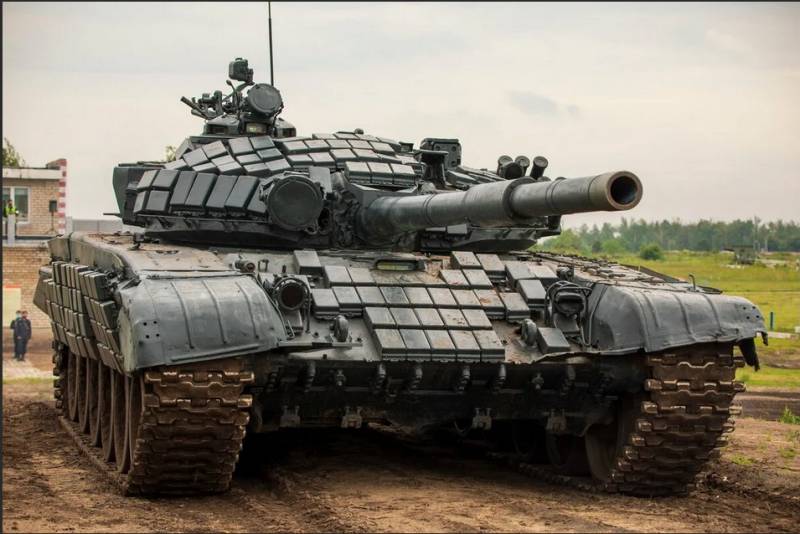
Probably, disputes about what is better: automatic or manual loading have already become classics of the genre, like “which is cooler: AKM or M-16”. However, this does not remove the relevance of the issue, as the world continues to produce Tanks both with automatic loaders and with manual systems.
The fact that each of the approaches has its pros and cons is clear and understandable. Let the US military talk for as long as you like that a trained loader will work faster than any AZ, no one forbids this. True, the automation on the new Japanese and South Korean tanks allows you to reload the gun in crazy 3 seconds, and the “trained loader” after a couple of arrivals in the tower will become a bunch of jelly with a probability of 50%, we are not talking about that now.

AZ has enough advantages. These are the smaller dimensions of the turret, and the fact that the machine does not get tired, does not make mistakes (chooses the type of projectile that was assigned), it is easier for it to load the gun on the go, especially in rough terrain. And it does not depend on the reduction of the crew in battle.
But now we will consider the moment, which we discussed for a long time with our expert Alexey Kuznetsov. They talked, discussed, sketched. And the topic was this: what if the AZ fails? What to do and how to fight in this case, especially if it is necessary to fight? And how difficult will it be compared to the work of a conventional loading western tank?
Indeed, no matter what happens, until its final failure, the loader will perform his simple role - to remove the next projectile from the stack and feed it into the chamber. And if something happens, you can replace the loader, although, of course, it’s not as simple as taking the first infantryman that comes across and putting him in the tower.
We will not even begin to simulate a situation in which AZ / MZ will fail. He will come out. Let's not get hung up on the difference between AZ and MZ, the reasons for leaving, that one has enough, that the other has enough. Broken pipes and hoses of the hydraulic system, broken power wires, deformation of the carousel (relevant after an explosion on a good land mine), and so on. The main thing is that the automation is dead. And the battle goes on, and it’s impossible to just take it in and out. It happens.
Moreover, a situation can happen in general when everything coincides with the shot. That is, the tray/cassette is empty.
T-64
Let's start with the T-64 (this is also true for the T-80, where the actions are almost the same, because the MOH). The main work falls on the tank commander, who must carry out the following actions:
- remove the gun guard from its side;
- open the gate wedge;
– raise the aluminum cover of the dispensing window;
- switch the valve on the spool box under your seat from position "A" to position "P";
- remove the commander's cupola from the stopper and turn it to the left;
- put the gun on a hydromechanical stop at the loading angle;
- turn on the mechanism for blocking the manual descent from the gun;
- return the commander's cupola to its original position;
- remove the handle of the manual drive from the bracket, insert it into the hole in the drive of the conveyor turning mechanism, remove the conveyor stopper and start rotation, while observing the projectile delivery window;
- on the exit of the projectile, stop the conveyor.
(A necessary digression. Alex TV explained two things: the first is that you can not turn the turret, with certain skills you can easily do everything without turning, the second is that during all these manipulations, the tank commander simply has to monitor the situation so as not to get it again. This difficult, but possible, because at least he is in his place, next to surveillance devices... In principle, an experienced commander can carry out all these manipulations almost blindly, but this is really an experienced one).
Go ahead. After the projectile exits, the tank commander:
– rotates the manual drive for lifting the tray and raises the tray to the dispensing line;
- takes out a wooden rammer and with its help sends a projectile into the bore first, then a charge, removing it from the spring hooks of the rear half-tray;
- closes the shutter;
– removes the spent pallet from the catcher to the tray;
- lowers the tray back into the conveyor of the loading mechanism;
- removes the cannon from the stopper, turns off the mechanism for blocking the manual descent of the cannon;
- gives a command to the gunner to open fire.
At this time, the gunner performs his functions: he brings the gun barrel to the loading angle (if necessary), prepares data for firing (range to target, type of projectile, etc.), monitors the situation.
The process is taken from the book “Technical description and operating instructions for the T-64A tank. Book One”, Moscow, Central Research Institute of Information, 1973. The standards are also spelled out there: 1 minute and 40 seconds are allotted for loading the first shot manually. That is, 100 seconds. Subsequent shots must be charged in 60 seconds. Of course, when compared to the automatic mode, which should load the gun in 7-10 seconds - an eternity.
Moreover, the instruction does not take into account additional factors, such as shell shock of the crew, lack of proper practice, and so on. But these factors can double the loading time, if not more.
There can be no question of a decent rate of fire, but the tank is capable of firing if the hydraulic or electrical systems fail. The question is relevant here: what to do if the tank commander cannot fulfill the duties of a loader? The answer is solely within the framework of the preparation and training of the gunner. It will be inconvenient, but even in such a situation it is possible to make a shot.
T-72
Now the same situation in the T-72.
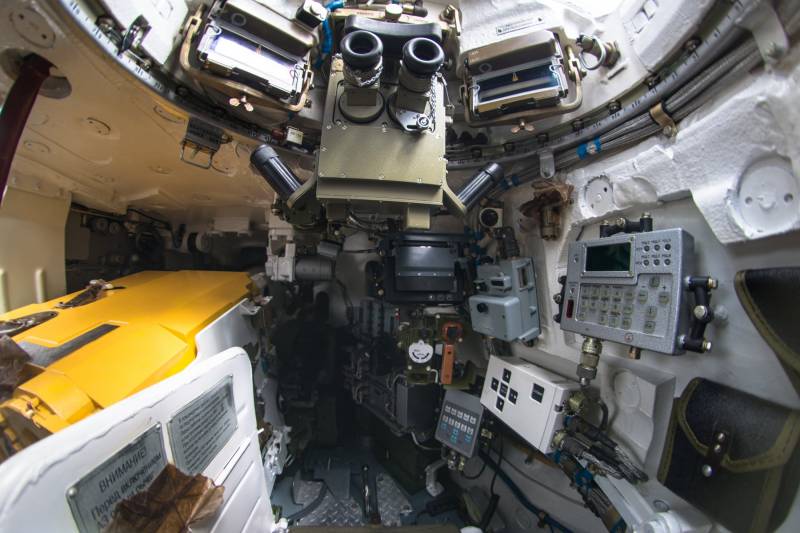
If you study the regulatory document "Tank" Ural ". Technical description and operating instructions ”(Moscow, Military Publishing House of the USSR Ministry of Defense, 1975), then it does not contain a time standard for manually loading a tank gun. Why? Yes, because this mode of operation of the automatic loader is simply not provided. But combat is such a state that many instructions simply do not give a damn about it, because you need to fire minimally in order to survive.
Because the gun in the T-72 can be loaded. But here the "combat Kama Sutra" is somewhat different. Less comfortable than in T-64/T-80. And everything again falls on the shoulders of the tank commander:
- move forward the right guard of the gun;
- open the wedge of the shutter (the gunner at this time lowers the barrel as far down as possible);
- turn the commander's cupola to the right (required);
- then the commander should fold in half, leaning forward, with his left hand turns on the mechanism for blocking the manual descent from the gun, and with his right hand turns and holds the stopper lever of the rotating conveyor. Then, with his left hand, he “swings” the lever of the manual drive for turning the conveyor, thereby turning it half a step, after which he releases the stopper and turns the conveyor until it stops completely;
- then the commander turns 180 degrees and manually raises the cassette to the unloading line.
(Retreat: if you are lucky, then the cassette will contain the shell you need, if not, the procedure will have to be repeated until the necessary type of shell is found. The tank commander cannot control which shell is in the conveyor at the time of loading, the doors of the delivery window are closed and open only when the cassette is raised.It is important here how the stacking is done so that the shells alternate).
- Next, the tank commander lies down (well, practically lies down) on the conveyor and first removes the projectile, then the charge. The gunner must at this time press the projectile stopper so that the commander can remove it;
- put the charge in a non-mechanized stack so as not to interfere;
- lower the cassette down;
- send the projectile, and then the charge;
- lower the wedge of the shutter;
- turn on the mechanism for manually blocking the descent;
- return the turret to its original position and give a command to the gunner to open fire.
In general, to manually load the T-72 cannon, you also have to plow the gunner, the question of who is monitoring the situation does not require an answer. The gunner, even if he is distracted, because the commander is not only busy, but he also does not have the opportunity to watch. The commander has to really spin.
Shot. After that, there are also some problems. In the T-72, if there is no power in the on-board network, then getting a spent pallet from the catcher is not a task for wimps, because raising the frame, lowering it, opening the hatch for ejecting pallets - everything is done by drives powered by electricity.
By the way, the T-62 had a manual drive to open the ejection hatch and lower the frame. And this very simple mechanism did not take up much space to be abandoned on the T-72. But they refused.
Of course, the mode in question is by no means the main one, this is the most emergency mode of operation of the tank and its crew. At one time, as a beginner, I asked a naive question: why is this so? Why was the manual loading mode provided in the T-64, and relatively comfortable, but not in the T-72?
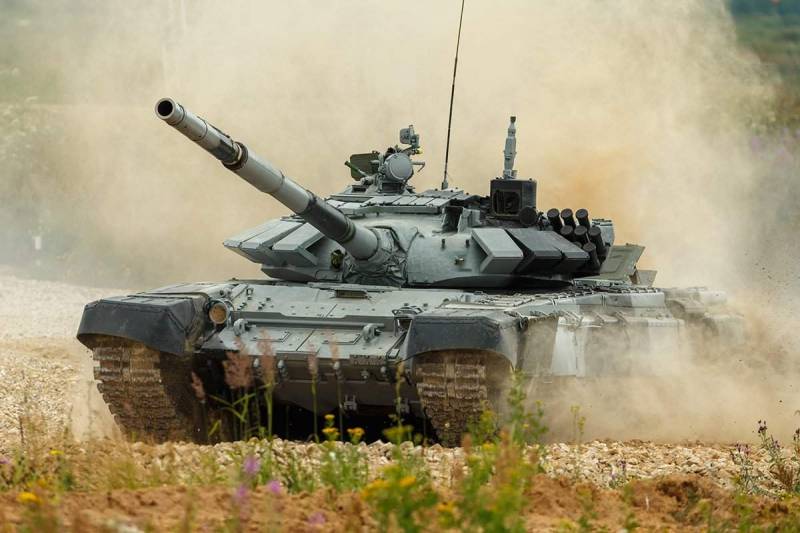
Designers, representatives of the Ministry of Defense, representatives of manufacturing plants - saw everything, and everyone was silent? It turns out that yes. But what can we say now about what happened more than 50 years ago in a completely different country? "I blinded him from what was." Everything is like in a song.
You will say (and I said the same at one time) that many problems were eliminated in the T-80 and T-90. Yes it is. The T-90 is definitely not de-energized after the first hit by an armor-piercing projectile in the tower. But how many T-90s and how many T-72s do we have in the army? That is the question…
Of course, a modern tank cannot but be stuffed with electronics that make life easier for the crew. But you have to pay for this. Including reliability and durability. Not in terms of breakdowns, but just in the field of unscheduled equipment failures due to hits in the tank. It's normal when something flies into a tank, in a war it's really the norm. But when all the electricity is cut down, it’s not great, because too much is tied to it.
So which is better?
Passions on what is better: AZ or MZ have not subsided, probably, since the appearance of an alternative AZ on the T-72.

The loading mechanism uses a hydraulic carousel rotation system and a lever to feed the projectile and charge, sending them together. The automatic loader is powered by electric drives, but, unlike the MOH, the projectile and charge are fed into the barrel separately.
So, in principle, the MZ is somewhat faster, although a well-promoted AZ electric motor will drive the carousel much faster, and the AZ will have an advantage when changing the type of projectile.
And we also have a hybrid, which is on the T-80, where the carousel drive is electric, but the layout of the carousel and the hydraulic lever are from MZ. As is - took the best.
If we compare the T-64 / T-72 with the "Abrams" or "Leopard" in this aspect, it turns out that everything depends on the commander of the Soviet tank. How quickly it will perform the duties of an infector, so much will a tank without AZ / MZ be effective.
That is, the failure of the tank commander automatically puts an end to the further use of the tank, albeit in a limited form. The gunner will be able to work on the enemy without a commander if the automation is working, but to equip a shot - alas. Our guns provide for manual loading only on the right side, and the gunner sits to the left of the gun. Moving back and forth is not an option at all, there really is only one way out - from the battle.
Loader... It's just a man. With their weaknesses. It can confuse and load the wrong projectile. May be tired. May fail due to hitting the tower.

By the way, appreciate how much easier it is to plant the Abrams than the T-72. But there's nothing to be done, the loader really requires a lot of space for his work. But it's easier with him. And it’s easier to work, the loader has fewer breakdowns, and they are eliminated by replacement much faster than a wrench that has flown under the AZ conveyor is picked out.
AZ / MZ has more weaknesses in theory. The hydraulics of the MZ will stop working in the event of a fluid leak, this is understandable. AZ categorically does not like when landmines and mines explode under the bottom, even a slight deformation of the bottom of the car can lead to the inoperability of the AZ, up to a major overhaul.
Still, automation is better.
Its advantages are more obvious, and the main one is more stable work on the go. Of course, when the Americans fire from their Abrams standing on a flat surface, they demonstrate miracles in turns and very fast reloading. However, we were 110% sure that after 30 minutes of the battle taking place on the fields of the same Lugansk region, with gullies and drops, when the tank would actively maneuver in rough terrain, it would be interesting to look at that combat "mogul" , which will ensure the reloading of the gun in 8 seconds. At least for 8.
And most importantly, the loader also has a limit. The main problem of AZ / MZ is the final length of the projectile, which is very difficult to increase in terms of modernization, being constrained by the size of the transportation equipment.
But the loader is limited. Projectile weight. The fact that the calibers of tank guns will grow is clear as daylight. The first step has already been taken by the Germans in the promising Panther KF51.
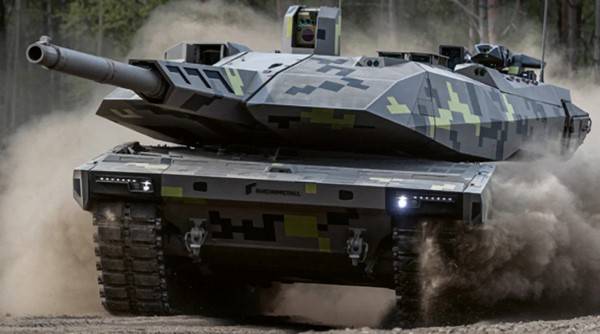
The Panther, which under certain conditions will replace the Leopard 2, will be armed with a 130-mm cannon with an automatic loader.
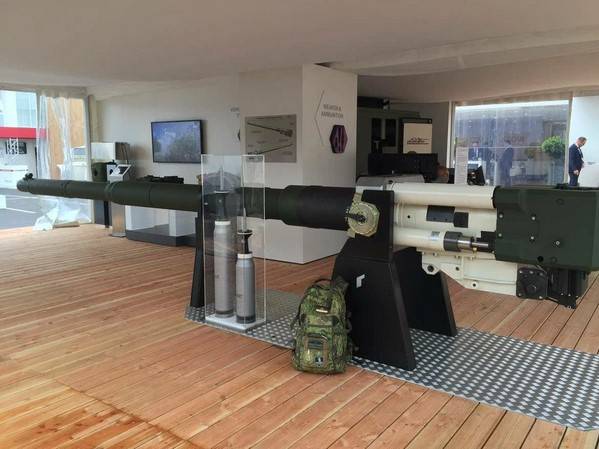
130 mm Next Generation (NG) 130 gun on display. A unitary shot of a new gun in the display case is on the left, a shot of a Leopard 2 tank gun is on the right.
The mass of a shot of a 130-mm gun reaches 40 kg. The long and fast work of the loader is very doubtful, even considering that there will be 20 shells in the stack and another 10 in a non-mechanized stack.
Even earlier, the French placed AZ on their Leclerc. And then the baton was picked up by the South Koreans and the Japanese.
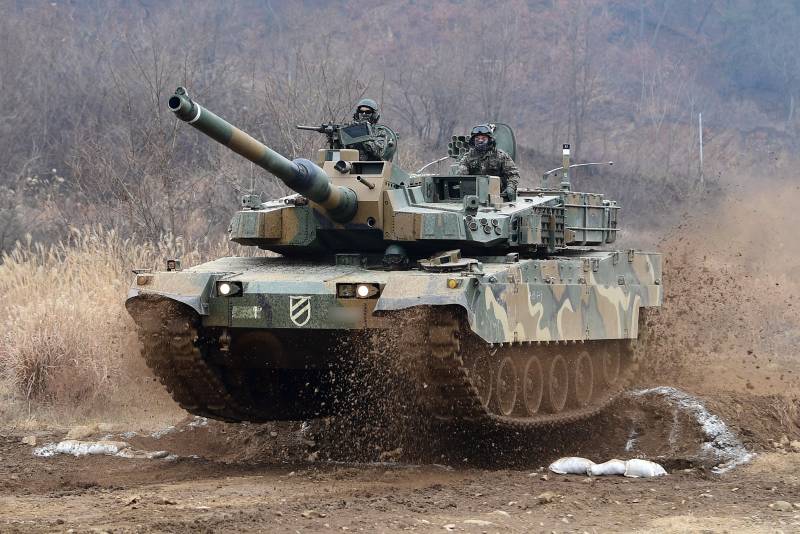
The South Korean tank is equipped with an AZ, very similar to the French one. Allows you to shoot up to 15 times per minute, that is, a reload speed of about 4 seconds. There are 16 rounds in a mechanized stack and another 24 in two stacks.
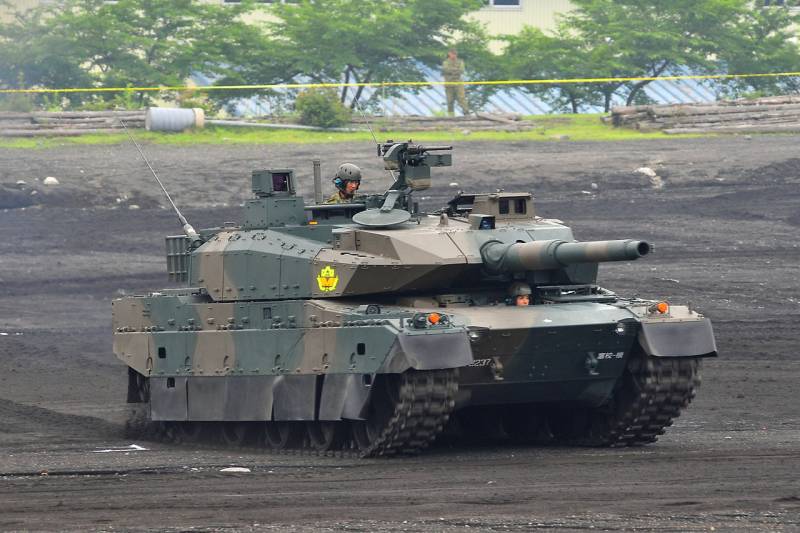
The latest Japanese tank "Type 10" is also with AZ. Moreover, it is this tank that holds the reload speed record - about 3 seconds.
It is impossible not to mention the Merkava. This beautiful tank is equipped with a drum feed mechanism for 10 shells to the loader, and the remaining 36 shells are located in the rear of the hull. Something average.
So the Americans with the Abrams, the British with the Challenger 2 and the Germans with the Leopard 2 are just gentlemen lagging behind in this regard. Although the Germans are correcting themselves. As for the Americans and the British, well, their tanks were not originally designed for the use of AZ, because it will never appear there. It’s easier to really develop a new tank, but if the Abrams suits everyone in the USA, then it will still serve.
Сonclusion
The automatic / loader mechanism can fail, but the tank, as a combat vehicle, will work in the hands of the crew of the T-64 / T-72 tank and their derivatives, more precisely, its commander in conditions of automatic failure. Moreover, the tank will partially lose its combat capability in the event that the AZ / MZ is operational, but the tank commander fails. The gunner will be able to fire using his set of sighting equipment. That is, a tank equipped with automatics can endure a crew reduction of up to two people and even to one, but then it will be possible to shoot only from a place.
A tank with a loader does not allow such liberties. Reducing the crew to two people (and in some cases the loss of only the loader) practically takes the tank out of the battle.
Still, the future belongs to automation, and not to "John".
Information